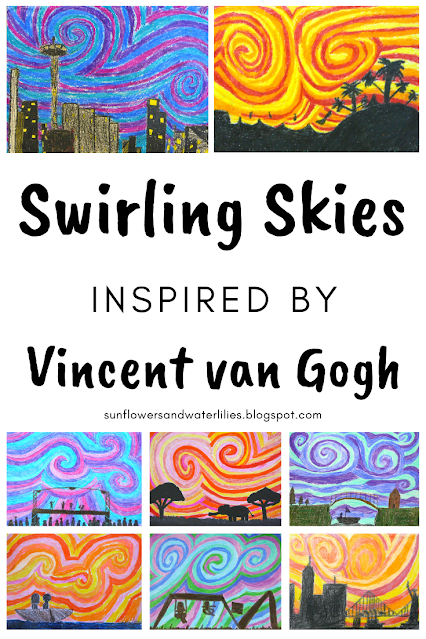Grid Method Close-Ups
These close-up oil pastel drawings were inspired by Georgia O'Keeffe and the way she focuses on the details of an object.
8th graders studied how O'Keeffe zoomed way up close into her flowers and recreated the details, textures, and shading within the forms. The students were free to choose their own subject matter to zoom in on. We introduced the grid method to recreate these images as accurately as possible and then used oil pastels to reproduce the colors, texture, and shading in our images. The results are stunning!
Introducing O’Keeffe and the Grid Method
Before the lesson begins, I introduce my students to Georgia O’Keeffe’s artwork. I show students this PowerPoint of her work, and we specifically focus our discussion on how she zooms way in on her flowers.
We look at how she focuses more on depicting the colors and shading within the objects, rather than focusing on the object itself. Sometimes you cannot even tell it’s supposed to be a flower! We also look at some of her paintings of other objects and landscapes and discuss other objects that could be zoomed in on to focus on the texture, shading, and colors of that object.
To create our close-up grid drawings inspired by Georgia O'Keeffe, students first draw a 2” 16-square grid in 8” square papers (I also have pre-gridded paper available when lesson modification is needed).
I explain the grid method to my students as a beneficial art technique that improves drawing accuracy. The method helps artists focus on drawing only the shapes within each individual grid square, a technique that is often easier than trying to draw the entire subject all at the same time. We practice our grid drawing techniques using this dog worksheet. I also have lots of fun seasonal Grid Worksheets in my store!


Choosing a Subject
Once students have set up their drawing paper, they can choose their reference photo. You can have them bring in their own photos, or you may provide the photos if you prefer a specific theme. My Grid Method Close-Up Lesson comes with 120 pre-gridded reference photos of flowers, animals, and various objects.
Students search for part of the image to crop and enlarge – an area that has good texture, shading, or detail. It is ok if it is zoomed in so much that it is unrecognizable – just like some of O’Keeffe’s flowers!
Gridding the image, Making the drawing
If you do not have pre-gridded reference photos, there are two ways students can get a grid onto their photo:
- They can trace a crop square (like a viewfinder) onto their image, and then divide each edge by 4 to make a 16-square grid (be warned, it can sometimes be challenging for them to measure and draw these grids), or
- They can tape a pre-printed transparency grid to their photo (it's more work for you to create these transparency grids, but it's much easier for students).
Review how to draw the image proportionally onto a larger square by copying one square at a time, from the grid on the photo, to the 8” grid on our paper.
Tip: If the grid lines are unsightly and not erasing well on the finished drawing, you could transfer the drawing onto another piece of drawing paper. We do this by outlining the drawing with a sharpie to darken it (just the drawing, not the grid) so that we can place another paper over it and trace the dark lines onto the final paper. You could also do a graphite or carbon paper transfer instead.
Coloring!
Demonstrate how to layer and blend colors over each other to create shading and texture. Note that dark colors should be placed down first. To make a darker shade of any color, layer black, brown, or a dark cool tone under it. To make a lighter tint of color, layer a light color like white, light gray, or a warm peach or yellow over it. To neutralize a color, mix it with its complementary color or a neutral like black, brown, or gray. Practice and experiment with different color combinations to find the best match for the reference photo. Place emphasis on observing the shading in the reference photo.
Also demonstrate how to use oil pastels to create different textures. Point out that most items in the pictures will probably either have a texture or require gradation. Very few parts of these drawings will require a flat, solid color. To give a picture more depth, all parts of the drawing should have at least two colors mixed with each other.
If students finish their project early, they may enjoy this Georgia O'Keeffe coloring page!
Happy coloring!!
This Full Lesson Plan with supplemental materials, the Georgia O'Keeffe PowerPoint, Grid Practice Worksheets, and Georgia O'Keeffe Coloring Page can all be found in my TpT store, All About Art.
















Comments
Post a Comment